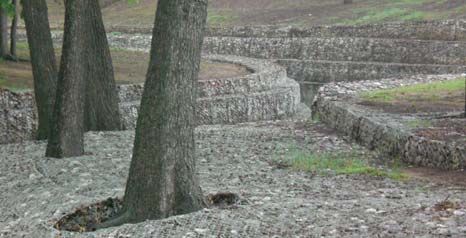Environmentally Sensitive Bio-Engineering of Gabion Structures
Gabion structures are an ideal, environmentally sensitive bio-engineering solution for many geotechnical, erosion control, stream bank stabilization and channel lining applications. The Natural Bio-Engineering Process of Gabion Structures is an important aspect of how a gabion structure restores the environment back to natural conditions once construction works are complete. With methods improving all the time Terra Aqua now offers multiple ways to vegetate or bio-engineer a gabion structure during the construction phase to immediately establish vegetation.
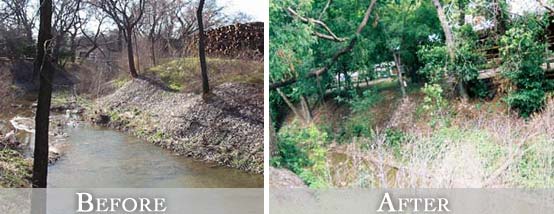
Natural Bio-Engineering Process of Gabion Structures
As described in other sections of the web site gabion structures are built by confining natural stone within individual gabion units which have been mechanically connected together to create a monolithic structure. A layer of geotextile filter fabric is placed between the gabion structure and the retained soil interface to prevent fines and small soil particles from leaching through the stone fill or structure during high flows or draw down providing complete soil retention, and hard armor protection unique to gabion structures.
Once the gabion structure is in place soils are inevitably deposited into the stone fill of the gabion structure resulting from surface drainage of the retained soils and by soils carried in the water flow being deposited into the structure during draw down. The process of soils slowly being deposited into the gabion structure occurs naturally and once the volume of soil within the voids of the stone fill is adequate vegetation begins to take root inundating the structure. Over time the gabion structure becomes naturally fully vegetated reinforcing the overall strength of the gabion structure while providing the advantages of a complete soil retention and hard armor solution while returning the environment back to its natural ecological condition.
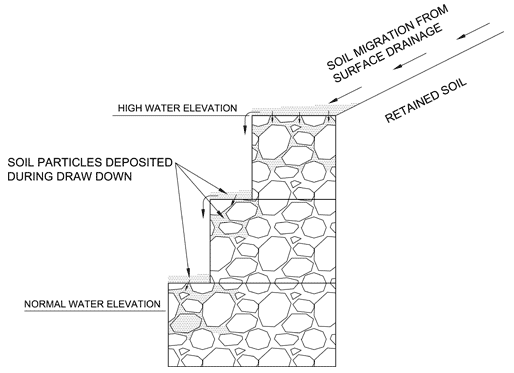
For slope protection and channel lining applications the soils within the voids of the stone fill are stable during dry periods and subjected to tractive forces only during hydraulic flows allowing soils to collect quickly, however for retaining walls and vertical slope protections the soils within the voids of the stone fill engages not only tractive forces from hydraulic impact but also gravitational forces. The result is that retaining walls and vertical slope protection structures may take longer for the natural bio-engineering process to take place.


Bio-Engineering Methods for Vegetating Gabion Structures
Successfully initiating and establishing vegetation into a gabion structure during the construction phase is directly related to the volume of soil placed and sustained within the voids and on the surface of the gabion stone fill.

Planting Vegetation On The Surface and Within Gabion Structures
Retaining Walls & Vertical Slope Protection

To ensure that soils are held within the voids of the stone fill for vertical structures we have found that multiple layers of select granular stone placed, swept and water jetted onto the surface and into the gabion stone will fill the voids of the gabion stone and provide a filter to prevent soils from migrating vertically through the gabion structure. It is best to provide a layer of granular stone fill and soil at each 1’ rise of the gabion stone fill.
Methods for Vegetating Channel Lining & Slope Protection

These structures are generally placed on a slope gradient of 1:5 to 1 or less. Because the slope angles are mild the soil deposited into the voids of the stone fill are much more stable than for vertical protections. Therefore it is typically required to place soil on the surface and apply vegetation through planting or hydro seeding. Another method to vegetate channel linings and slope protections is to place the gabion stone fill then apply 4”- 6” layer of soil then place an erosion control blanket on the surface of the soil and confine all components into the unit by applying the gabion or mattress lid over the top of the erosion control blanket, the soil and the gabion stone fill.
Methods for Vegetating Retaining Walls & Vertical Slope Protection

To initiate vegetation take gabion stone fill, soil and seed place each into a rock box then apply small quantity of water and mix the gabion stone fill the soil and the seed together. Once the rock, soil and seed are wet the soil and seed will bond to the stone fill. The result is that when the gabion stone fill is mechanically placed into the gabion structure it will carry soil and seed with it applying soil and seed to the entire cross section of the gabion structure why the layers of granular stone fill provide a filter to prevent soil from migrating vertically.
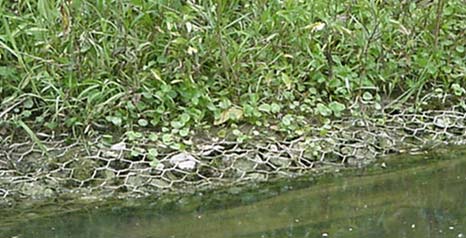
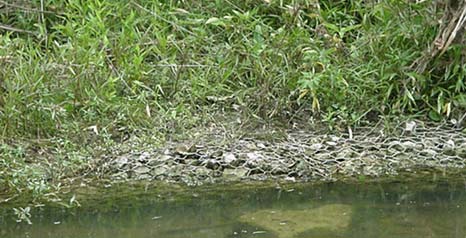
Planting Vegetation Through Gabion Structures Into Native Soils
Planting trees and shrubs through a gabion structure is another advantages method for vegetating gabion structures. This requires live stakes typically willow tress be planted through the cross section of the gabion structure through the compacted backfill and be planted into the native slope or soil. This will ensure that the root structure of the trees and shrubs do not affect the gabion structure


Installing Gabion Structures Without Harming Or Displacing Existing Vegetation
Gabions are unique in that they may be installed to ensure that existing vegetation is not disturbed or destroyed. Construction methods in the field allow for any gabion structure to be installed in harmony with existing vegetation.


